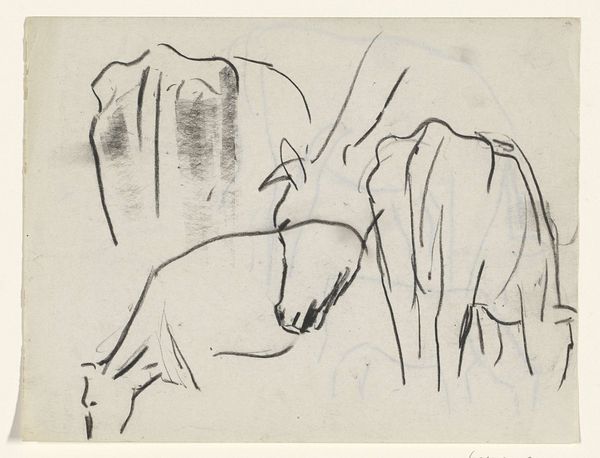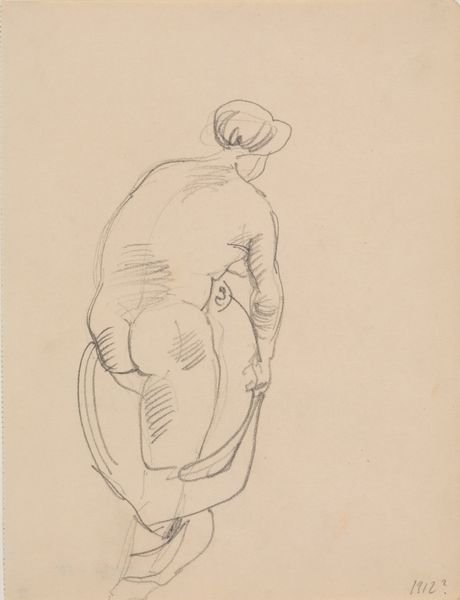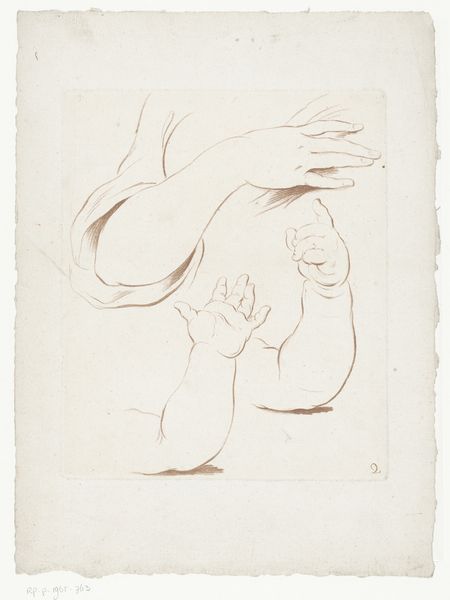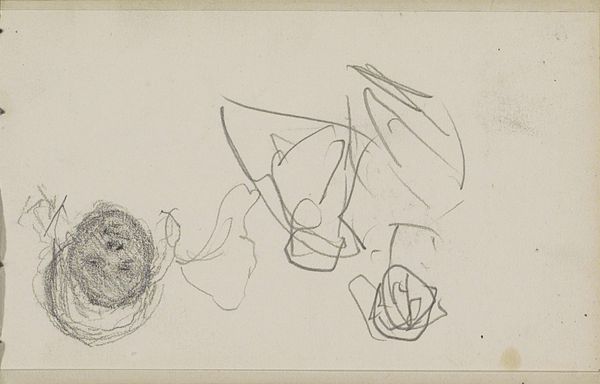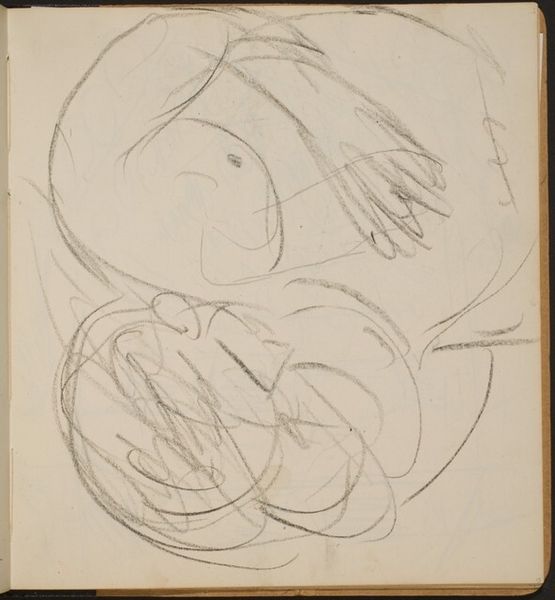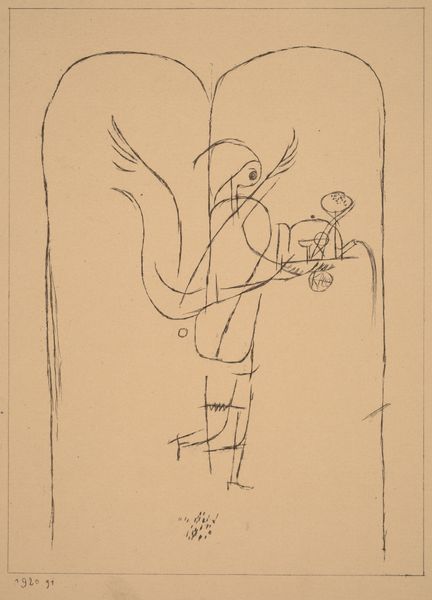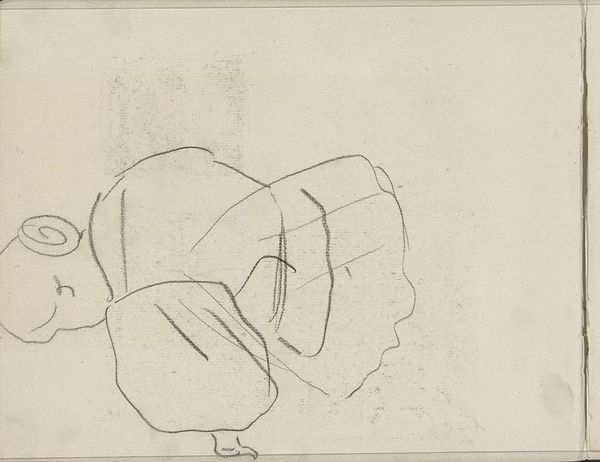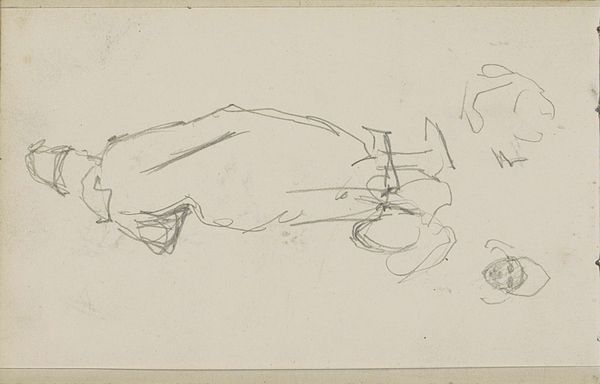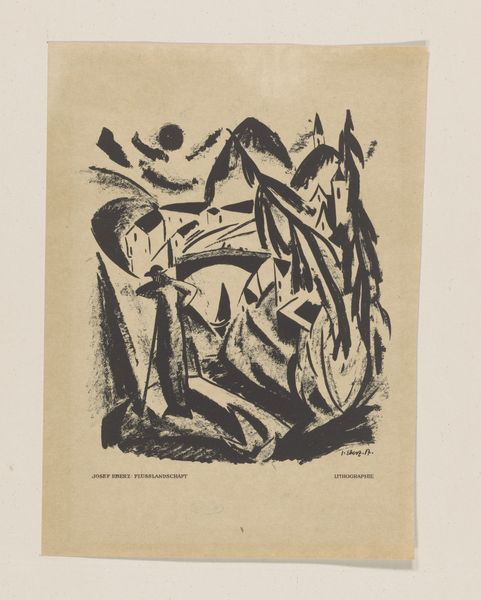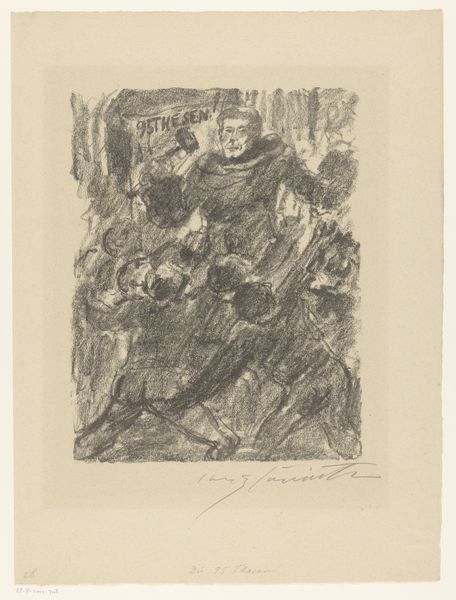
Study for "The Street Pavers": Man Laying Paving Stones 1914
0:00
0:00
Dimensions: 5 3/4 x 8 1/4 in. (14.6 x 21 cm)
Copyright: Public Domain
Curator: This pen-ink sketch from 1914 is entitled "Study for 'The Street Pavers': Man Laying Paving Stones," by Umberto Boccioni. It currently resides here at the Metropolitan Museum of Art. Editor: My first thought? It’s raw, immediate. The energetic lines really convey the labor, the physical effort involved in the paving process. It feels like it could burst from the page. Curator: It's a fantastic example of futurist line work—note how he captures the motion and dynamism. The image shows us more than just a static scene of labor; it's charged with energy and forward momentum which mirrors Italy's rapid industrialization in the early 20th century. Boccioni saw the beauty and even heroism in this new, mechanized world. Editor: Absolutely. Look at the weight of the man, hunched over, bearing down on the stones. But it’s not romanticized labor; it hints at the physical toll that industrial work inflicts on the human body. What's striking, also, is its preparatory status, as we call it "Study for," the unseen end product of the actual "The Street Pavers." It makes us consider what artistic labor makes visible versus what labor it erases from public visibility. Curator: You're pointing at something critical: this "study" presents a particular vantage point on industrial labor. Futurism was deeply concerned with representing the realities of modern life, but it did so from a very specific position of a rapidly evolving nation, keen to establish itself on the world stage. Boccioni, a very vocal member of the movement, produced work directly engaging with then current national rhetoric. Editor: So, Boccioni captured the labor as much for the heroic dynamism as for an artistic movement keen on engaging with a progressive and kinetic modern era. I still come back to its medium though, its lines; this feels almost anti-monumental. It almost strips away all the "grand" claims about labor and just presents labor. Curator: I appreciate how your reading acknowledges the power of the line, especially when considering his politics of making it accessible to all citizens to admire. That to me, sums up the contradictions inherent in Boccioni's artistic vision, as a historical subject. Editor: Exactly. I will be sitting with how, despite that, these lines immortalize the very act, very material of modern-day construction. I’m so curious to reflect on it.
Comments
No comments
Be the first to comment and join the conversation on the ultimate creative platform.
